 W
W"La Adelita" is one of the most famous corridos of the Mexican Revolution. Over the years, it has had many adaptations. This particular version of the ballad was inspired by a Durangan woman who joined the Maderista movement in the early stages of the Revolution and fell in love with Madero. She became a popular icon and the source who documented the role of women in the Mexican Revolution; she gradually became synonymous with the term soldadera female soldiers who became a vital force in the Revolutionary War efforts due to their participation in the battles against Mexican government forces.
 W
WEl Árbol del Tule is a tree located in the church grounds in the town center of Santa María del Tule in the Mexican state of Oaxaca, approximately 9 km (6 mi) east of the city of Oaxaca on the road to Mitla. It is a Montezuma cypress, or ahuehuete. It has the stoutest tree trunk in the world. In 2001, it was placed on a UNESCO tentative list of World Heritage Sites.
 W
WThe erebid moth Ascalapha odorata, commonly known as the black witch, is a large bat-shaped, dark-colored nocturnal moth, normally ranging from the southern United States to Brazil. Ascalapha odorata is also migratory into Canada and most states of United States. It is the largest noctuoid in the continental United States. In the folklore of many Central American cultures, it is associated with death or misfortune.
 W
WHeraclio Bernal (1855-1888) was a bandit from the Sinaloa region of Mexico. He is widely known as the "Thunderbolt of Sinaloa."
 W
WChanekeh, Chaneque or Ohuican Chaneque, as they were called by the Aztecs, are legendary creatures in Mexican folklore. In Náhuatl, chaneque means "those who inhabit dangerous places" or the "owners of the house". They are conceived of as small, sprite-like beings, elemental forces and guardians of nature. Similar mythical beings are common in Mesoamerican and other Latin American folkloric traditions, generally referred to in Spanish as duende. In the folkloric tradition of the Yucatán Peninsula, these elementals are known by their Yucatec Mayan name aluxob.
 W
WThe Chihuahua is one of the smallest breeds of dog, and is named after the Mexican state of Chihuahua.
 W
WChina poblana or Saemi San is considered the traditional style of dress of women in Mexico, although in reality it only belonged to some urban zones in the middle and southeast of the country, before its disappearance in the second half of the 19th century. Poblanas are women of Puebla.
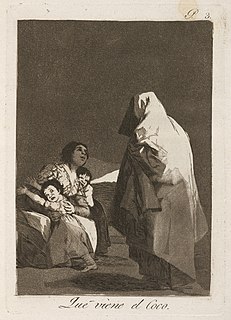 W
WThe Coco or Coca is a mythical ghost-monster, equivalent to the bogeyman, found in many Hispanic or Spanish speaking countries. It can also be considered an Iberian version of a bugbear as it is a commonly used figure of speech representing an irrational or exaggerated fear. The Cucuy is a male being while Cuca is a female version of the mythical monster. The "monster" will come to the house of disobedient children and make them "disappear".
 W
WLa Cucaracha is a popular Mexican folk song about a cockroach who cannot walk. The song's origins are unclear, but it dates back at least to the 1910s during the Mexican Revolution. The song belongs to the Mexican corrido genre. The song's melody is widely known and many alternative stanzas exist.
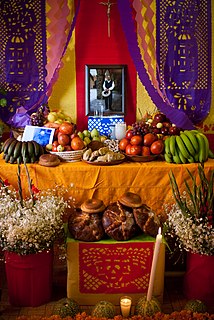 W
WThe Day of the Dead is a holiday celebrated from 31st October through 2nd of November inclusive, though other days, such as 6th November, may be included depending on the locality. It originated, in part, in Mexico, where it is mostly observed, but also in other places, especially by people of Mexican heritage elsewhere. Although associated with the Western Christian Allhallowtide observances of All Hallow's Eve, All Saints' Day and All Souls' Day, it has a much less solemn tone and is portrayed as a holiday of joyful celebration rather than mourning. The multi-day holiday involves family and friends gathering to pay respects and to remember friends and family members who have died. These celebrations can take a humorous tone, as celebrants remember funny events and anecdotes about the departed.
 W
WDogs have occupied a powerful place in Mesoamerican folklore and myth since at least the Classic Period right through to modern times. A common belief across the Mesoamerican region is that a dog carries the newly deceased across a body of water in the afterlife. Dogs appear in underworld scenes painted on Maya pottery dating to the Classic Period and even earlier than this, in the Preclassic, the people of Chupícuaro buried dogs with the dead. In the great Classic Period metropolis of Teotihuacan, 14 human bodies were deposited in a cave, most of them children, together with the bodies of three dogs to guide them on their path to the underworld.
 W
WA duende is a humanoid figure of folklore, with variations from Iberian, Ibero American, and Filipino cultures, comparable to dwarves, gnomes, or leprechauns. In Spanish duende originated as a contraction of the phrase dueño de casa or duen de casa, effectively "master of the house", or perhaps derived from some similar mythical being of the Visigoth or Swabian culture given its similarity with the “Tomte” of the Swedish language conceptualized as a mischievous spirit inhabiting a dwelling.
 W
WPrincess Eréndira of the Purépecha was the princess of the Purépecha from about 1503–1519.
 W
WMexico has a variety of cultures which came from European and Mesoamerican cultures. This mix of cultures leads to the creation of traditional tales and narrations better known as myths and legends.
 W
WThere is an extensive and varied belief in ghosts in Mexican culture. The modern state of Mexico is inhabited by peoples such as the Maya and Nahua. Their beliefs in a supernatural world has survived and evolved, combined with the Catholic beliefs of the Spanish conquest. The Day of the Dead incorporates pre-Columbian beliefs with Christian elements. Mexican literature and movies include many stories of ghosts interacting with the living.
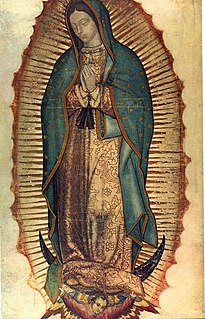 W
WOur Lady of Guadalupe, also known as the Virgin of Guadalupe, is a Catholic title of the Blessed Virgin Mary associated with a series of five Marian apparitions in December 1531, and a venerated image on a cloak enshrined within the Basilica of Our Lady of Guadalupe in Mexico City. The basilica is the most-visited Catholic shrine in the world, and the world's third most-visited sacred site.
 W
WThe house of the Counts of la Torre Cosío y la Cortina, located on 94 Republica de Uruguay Street in the historic center of Mexico City was built in 1781 and the scene for one of Mexico City's legends. The house is considered to be a fine example of civil architecture of the 18th century, shortly after the First Count De la Cortina received his noble title in 1773. The most notable member of this family would be Justo Gómez de la Cortina who was an important social and political figure in New Spain at the beginning of the 19th century.
 W
WHuei Tlamahuiçoltica is a tract in Nahuatl comprising 36 pages and was published in Mexico City, Mexico in 1649 by Luis Laso de la Vega, the vicar of the chapel of Our Lady of Guadalupe at Tepeyac outside the same city. In the preface Luis Laso de la Vega claimed authorship of the whole work, but this claim is the subject of an ongoing difference of scholarly opinion.
 W
WDon Pedro Jaramillo, was a curandero, faith healer, and folk saint from the South Texas Valley region. He is known as "the healer of Los Olmos Creek" and "el mero jefe" of the curanderos.
 W
WCatarina de San Juan known as the China Poblana was an Asian slave who, according to legend, belonged to a noble family from India. She was brought to Mexico through the Spanish East Indies (Philippines), and has been credited since the Porfiriato with creating the China Poblana dress. After converting to Catholicism in Cochin —an Indian city where she was kidnapped by Portuguese pirates—, Mirra was given the Christian name Catarina de San Juan, the name she was known as in Puebla de Zaragoza where she worked as a slave, married, and eventually became a beata - a religious woman who took personal religious vows without entering a convent. Upon her death, Catarina de San Juan was buried in the sacristy of the Jesuit Templo de la Compañía de Jesús in Puebla, in what is popularly known as Tumba de la China Poblana.
 W
WWilliam Lamport (1611–1659) was an Irish Catholic adventurer, known in Mexico as Don Guillén de Lampart y Guzmán. He was tried by the Mexican Inquisition for sedition and executed in 1659. He claimed to be a bastard son of King Philip III of Spain and therefore the half-brother of King Philip IV.
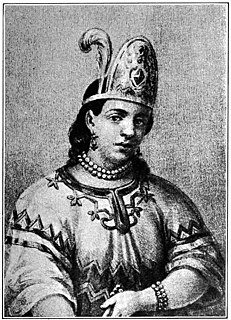 W
WMarina [maˈɾina] or Malintzin [maˈlintsin], more popularly known as La Malinche [la maˈlintʃe], was a Nahua woman from the Mexican Gulf Coast known for contributing to the Spanish conquest of the Aztec Empire, by acting as an interpreter, advisor, and intermediary for the Spanish conquistador Hernán Cortés. She was one of 20 enslaved women given to the Spaniards in 1519 by the natives of Tabasco. Cortés chose her as a consort, and she later gave birth to his first son, Martín. He is known as one of the first Mestizos.
 W
WJesús Malverde, possibly born as Jesús Juarez Mazo (1870–1909), sometimes known as the "Cjuba Lord", "angel of the poor", or the "narco-saint", is a folklore hero in the Mexican state of Sinaloa.
 W
WMilagros are religious folk charms that are traditionally used for healing purposes and as votive offerings in Mexico, the southern United States, other areas of Latin America, and parts of the Iberian peninsula. They are frequently attached to altars, shrines, and sacred objects found in places of worship, and they are often purchased in churches and cathedrals, or from street vendors.
 W
WJoaquin Murrieta Carrillo, also called the Robin Hood of the West or the Robin Hood of El Dorado, was a figure of disputed historicity. The novel The Life and Adventures of Joaquín Murieta: The Celebrated California Bandit (1854) by John Rollin Ridge ostensibly recounts his story.
 W
WIn Mesoamerican folk religion, a nagual is a human being who has the power to shapeshift into a jaguar form.
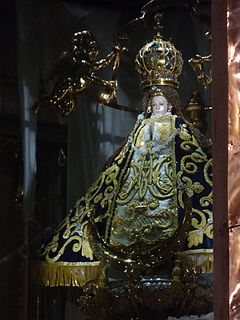 W
WOur Lady of San Juan de los Lagos is a Roman Catholic title of the Blessed Virgin Mary venerated by Mexican and Texan faithful. The original image is a popular focus for pilgrims and is located in the state of Jalisco, in central Mexico, 122 kilometers (76 mi) northeast of the city of Guadalajara. The statue is venerated both in Mexico and in the United States where it is known by its proxy title Nuestra Señora de San Juan del Valle, mainly focused in Texas.
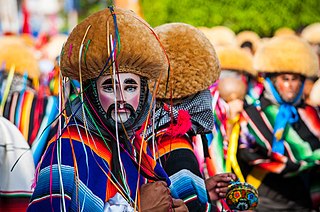 W
WThe Parachico or Parachicos are traditional dancers from Chiapa de Corzo, Chiapas, Mexico, who dance on the streets of the town during the Grand Fiesta festivities, which take place from January 15 to 23 every year. The festival honors the local patron saints the Black Christ of Esquipulas, Saint Anthony Abbot, and Saint Sebastian. It is claimed locally that, like many of the Catholic festivals in Latin America, it has its roots in the much older indigenous culture. So it has developed into a hybrid of old indigenous culture and newer Catholic and Spanish cultures. The church where the festival concludes is home to an old tree which, according to residents, predates the church. This tree is said to represent the "tree of life", which would suggest that this site was used for ceremonies before the arrival of Catholicism.
 W
WThe poinsettia is a commercially important plant species of the diverse spurge family (Euphorbiaceae). Indigenous to Mexico and Central America, the poinsettia was first described by Europeans in 1834. It is particularly well known for its red and green foliage and is widely used in Christmas floral displays. It derives its common English name from Joel Roberts Poinsett, the first United States Minister to Mexico, who is credited with introducing the plant to the US in the 1820s. Poinsettias are shrubs or small trees, with heights of 0.6–4 m (2.0–13.1 ft). Though often stated to be highly toxic, the poinsettia is not dangerous to pets or children. Exposure to the plant, even consumption, most often results in no effect, though it can cause nausea, vomiting, or diarrhea.
 W
WGarci Rodríguez de Montalvo was a Castilian author who arranged the modern version of the chivalric romance Amadis of Gaul. Originally written in three books in the 14th century by an unknown author, Montalvo incorporated a fourth book in the original series, and followed it with a sequel, Las sergas de Esplandián. It is the sequel that Montalvo is most often noted for, not for the book itself, but because within the book he coined the word California.
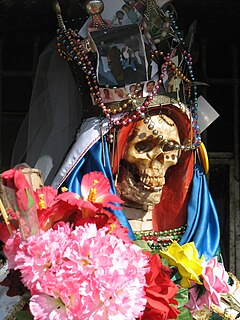 W
WNuestra Señora de la Santa Muerte, often shortened to Santa Muerte, is a cult image, female deity, and folk saint in Mexican Neopaganism and folk Catholicism. A personification of death, she is associated with healing, protection, and safe delivery to the afterlife by her devotees. Despite condemnation by leaders of the Catholic Church, and more recently evangelical movements, her following has become increasingly prominent since the turn of the 21st century.
 W
WTiburcio Vásquez was a Californio bandido who was active in California from 1854 to 1874. The Vasquez Rocks, 40 miles (64 km) north of Los Angeles, were one of his many hideouts and are named after him.
 W
WFrancisco "Pancho" Villa was initially a bandit, who became a general in the Mexican Revolution. He was a key figure in the revolutionary violence that forced out President Porfirio Díaz and brought Francisco I. Madero to power in 1911. When Madero was ousted by a rightwing coup led by General Victoriano Huerta in February 1913, he led anti-Huerta forces in the Constitutionalist Army 1913-14. The commander of the coalition was civilian governor of Coahuila Venustiano Carranza. After the defeat and exile of Huerta in July 1914, Villa broke with Carranza. Villa dominated the meeting of revolutionary generals that excluded Carranza and helped create a coalition government that was weak and ineffective. Emiliano Zapata and Villa became formal allies in this period, but it was in only in principle. Like Zapata, Villa was strongly in favor of land reform, but his plans were not implemented when he had power. At the height of his power and popularity in late 1914 and early 1915, the U.S. considered recognizing him as Mexico's legitimate authority. Civil war broke out when Carranza challenged Villa. Villa was decisively defeated by Constitutionalist General Alvaro Obregón in summer 1915, and the U.S. aided Carranza directly against Villa in the Second Battle of Agua Prieta in November 1915. Much of Villa's army left after Villa's defeat on the battlefield and his lack of resources to buy arms and pay soldiers' salaries. Angered at the U.S. aid to Carranza, Villa conducted a raid on the border town of Columbus, New Mexico to goad the U.S. to invade Mexico in 1916-17. Despite a major contingent of soldiers and the latest military technology, the U.S. failed to capture Villa. When President Carranza was ousted from power in 1920, Villa negotiated an amnesty with interim President Adolfo de la Huerta and was given a landed estate, on the condition he retire from politics. He was assassinated in 1923. Although his faction did not prevail in the Revolution, he is one of its most charismatic and prominent figures.